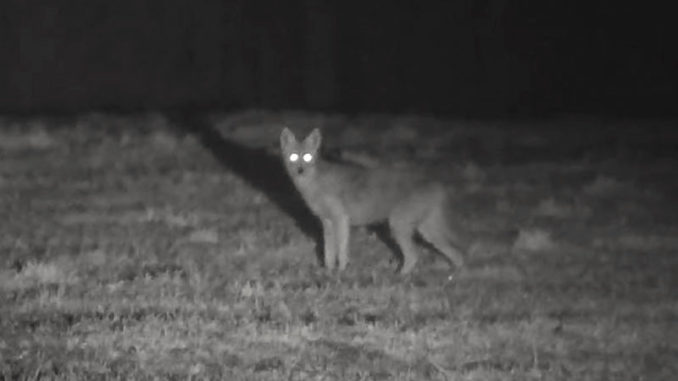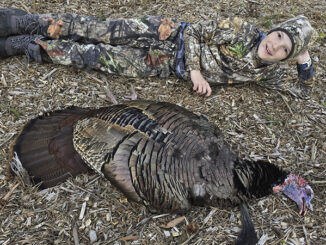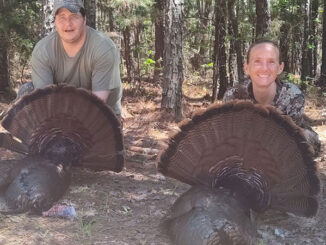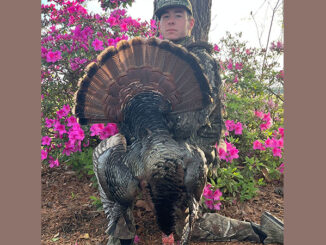
Some properties can produce coyote harvests all year long
Coyote hunting is a 365-day per year hobby which puts a lot of pressure on the resource if you let it. But what makes one property a better predator hunting property than another? What factors make a great predator hunting property? Let’s take a look to find out which properties can be great ones that produce all year.
Predator hunting properties
One great thing about predator hunting is the number of properties that a hunter can gain access to hunt. Landowners are more willing to allow permission to hunt for predators, mainly because you can hunt predators when other game is out of season. And you can hunt these predators at night.
Many landowners will allow you access during their chosen game’s offseason. Any property with coyotes can be a good hunting property. But a few characteristics can make it a great hunting property.
Fields
Fields give the predator hunter a huge advantage of seeing the predators before the predators see them. This factor alone makes fields a great place to key in on for great predator hunting. Fields also produce feeding opportunities for predators as they search for rabbits, birds, and even insects in the vegetation or crop.
Pick a great vantage point in a field near a woodlot and I guarantee you will get on some coyotes. Recently cut fields provide a better vantage point. And the farm equipment always kills some small animals and insects during the cutting. That’s a big attractant to coyotes.
Inform your landowners that you would like to know as soon as they cut their fields so you can get onto the predators that move in to clean up the injured or dead prey. This is an easy buffet for predators. It always produces.
Properties with field should rank high on your list of ones to hunt. Pick days with the best wind direction. Hit these fields often. But don’t spend too much time per field. Instead, hit multiple fields in the same night.
Livestock
My favorite of all coyote hunting land is properties with any livestock. The primo properties are those will cattle. I would trade five other properties for one cattle farm. Cattle keep multiple field low enough to hunt as they graze. This allows hunters to see coyotes in these field even during highest vegetation times of year.
Coyotes will always check on the local livestock herd for new calves as well as small prey in and around cattle. Cow pies are a source of food for some coyotes. Young calves drink a lot of high vitamin milk from their mothers. And coyotes will follow calves for the best cow waste.
Time after time, I’ve watched coyotes amongst cattle searching for food. Many times after taking coyotes off of a certain herd of cattle, more coyotes will take their place. These coyotes are replaced quickly with others. That’s because this is a prime feeding area. And every coyote for miles knows this to be true. Weaker coyotes often cruise by to see if they can claim such areas.
Coyotes are very vocal. And if a challenging coyote doesn’t hear any howls in prime areas, they often move in quickly to fill the void.
Coyotes are also attracted to other farm animals
Chicken and sheep farms are also great areas to hunt multiple coyotes. Predators are always testing the areas looking for food. It also helps to know what areas of the farm are used to place deceased livestock. These areas will be known by every coyote. And that means these areas will produce.
I also find that coyotes will travel long distances to hit these high food areas. So I often have very close coyotes hitting these areas early in the night. Then other coyotes that have traveled farther will move in late in the night or early morning. Replacement of harvested coyotes is quick in these areas. Properties like this are a must-have to stay on coyotes all year.
I hit these properties often, and I follow the rotation of the cattle as the farmers move them from field to field. I will stay longer at this location than fields with no cattle. It’s best to get comfortable in these areas and wait longer. The coyotes will come.
Properties bordering public land
If you take any of the properties mentioned above and add thick public land next to them, you have the perfect recipe for great coyote hunting land. Public land has no night hunting. So the coyotes have a refuge from pressure most of the year.
Public land hunters take little to no coyotes. And they must be out of the woods at dusk. Also, they can not hunt during non-game seasons. This gives coyotes millions of acres to raise their young and den up. As mentioned above, some coyotes will bed close to the fields while other will travel long ways through public lands to their feeding areas.
My first encounter hearing coyotes in the Carolinas was on my lease that borders public land that then leads to a cattle farm. I would hear the coyotes at dusk near my lease, then throughout the night, moving closer to the fields, then eventually into the fields.
Once I gained permission to hunt those fields, my harvest numbers exploded. This thick cover in the public land was critical to replacing coyotes that I took out of the fields. New coyotes would move in from the public land almost immediately. This created a never-ending supply of predators.
Pay attention to coyotes howling at different time of the night. They will often tell you where they are coming from and where they are going. Public land with a lot of vocals is land that will be replenished quickly. The hunter’s only need is to find the feeding grounds for year-round action.
Research areas close to you and see if you can find the perfect coyote hunting property. You may be closer than you think to a predator hunting honey hole.
__________________
Click here to get more predator hunting tips from Gene “The Mailman” Wisnewski.




Be the first to comment